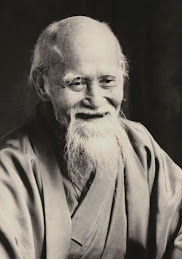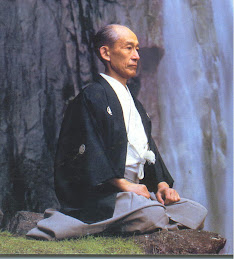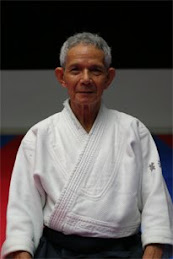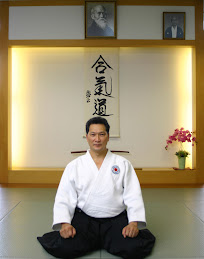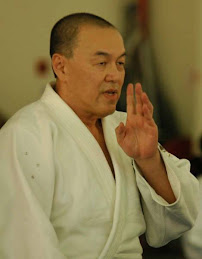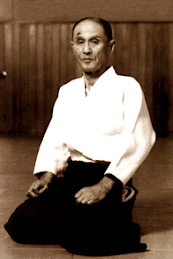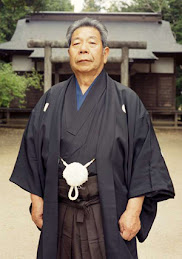
Monday, March 1, 2010
The Classification of Aikido

Monday, January 25, 2010
IRIMI NAGE


Monday, November 23, 2009
Power of Masakatsu & Agatsu

Wednesday, November 4, 2009
Hakama, the Samurai's secret........
Hakama is what we known, as a traditional samurai costume. It was commonly wear in Aikido, Kendo and some other Japanese martial arts. Hakama also means horse-riding as it protect a horseman's leg from any disturbing objects. Hakama is not a skirt, but more of a pants. The Hakama also show the values of the legendary warrior, the Samurai.
On the Hakama, there are seven folds; 5 at the front and 2 at the back. These seven folds represent the seven fundamental values of a Samurai; Courage, Benevolence, Justice, Etiquette, Honesty, Loyalty and Honor. These seven values or virtues are the spirit of the Samurai and Bushido.
Hakama, acts as a protection for the legs and also a weapon for the person. Besides holding a sword, weapons can be hidden in the Hakama for emergency defense. Covering the legs of the user, it can hide our leg movement, this disallows our opponents to see and predict our leg movement. Though this tradtional clothing restrict some of the bodily movement, it provide us the perseverance to train more in order to overcome the restrictions of the Hakama.
Monday, October 19, 2009
The Way of Open Mindedness

Aikido is the way of harmony. And to harmonize the world, the usage of the techniques alone will not help, the development of human values and addition of virtues and wisdom will also not be enough for the way of harmony. To totally harmonize with the world, we must not only harmonize with our own mind, soul and body, but also everyone, nature, the world and the cosmos.
Tao or the way is the concept of Taoism, and to gain the world, it is through acceptance and open-mindedness. To win over people's hearts, we must put our disagreement and dislike aside and accept all reasons of everyone. When O' Sensei was creating his own martial art, he studied many ancient text, not only his own religion, Shinto, but he also studied Taoism, Confucianism, Buddhism and even Christianity. All these religions have a similar and whole concept, it is virtue, harmony and unity.
In O'Sensei's quotation, Aikido is not just a self defense martial art, it is also a philosophy. Harmony is open-mindedness and acceptance. All martial art have a common goal, sharing, accept and enlightment. Arrogance or Discrimnation shuold not exist. Different schools have different cultures, they have disadvantages and benefits. Putting ourselves in other people's shoes, we are able to understand the feelings and the reason behind their very actions.
Aikido is not to correct others, but to correct ourselves and then share the different experiences to the world.
Wednesday, October 7, 2009
Tuesday, October 6, 2009
Weapons of War!!!!
Weapons are mostly used by martial artists or warrior. Weapons are the arms of the warrior, the extra expansion of a warrior hand. For example, stick or spear are long ranged weapon. Ever long range will be archery.
In Chinese martial art, there are Eighteen weapons of War:
- Sabre
- Spear
- Straight sword
- Staff
- Halberd
- Axe
- Battle Axe
- Hook sword
- Fork/ Trident
- Steel whip
- Mace
- Hammer
- Talon
- Ranseur/ Trident-halberd
- Lance
- Short cudgel
- Stick/ Crutches
- Meteor hammer
For example, the sabre can be long or short ranged. The Green Dragon Sabre used by Guan Yu is a long ranged one and destructive due to it large and sharp blade, therefore it is heavy in weight and hard to handle.
Spears and lances are commonly used by soldiers or knight. They are long and light in weight. Although it is easy to control and have increased agility, but it is a soft weapon, it possess less strength than the Sabre.
The choice of weapon depend on the capabilities of the particular person, the strength, the area of space and comfort.



